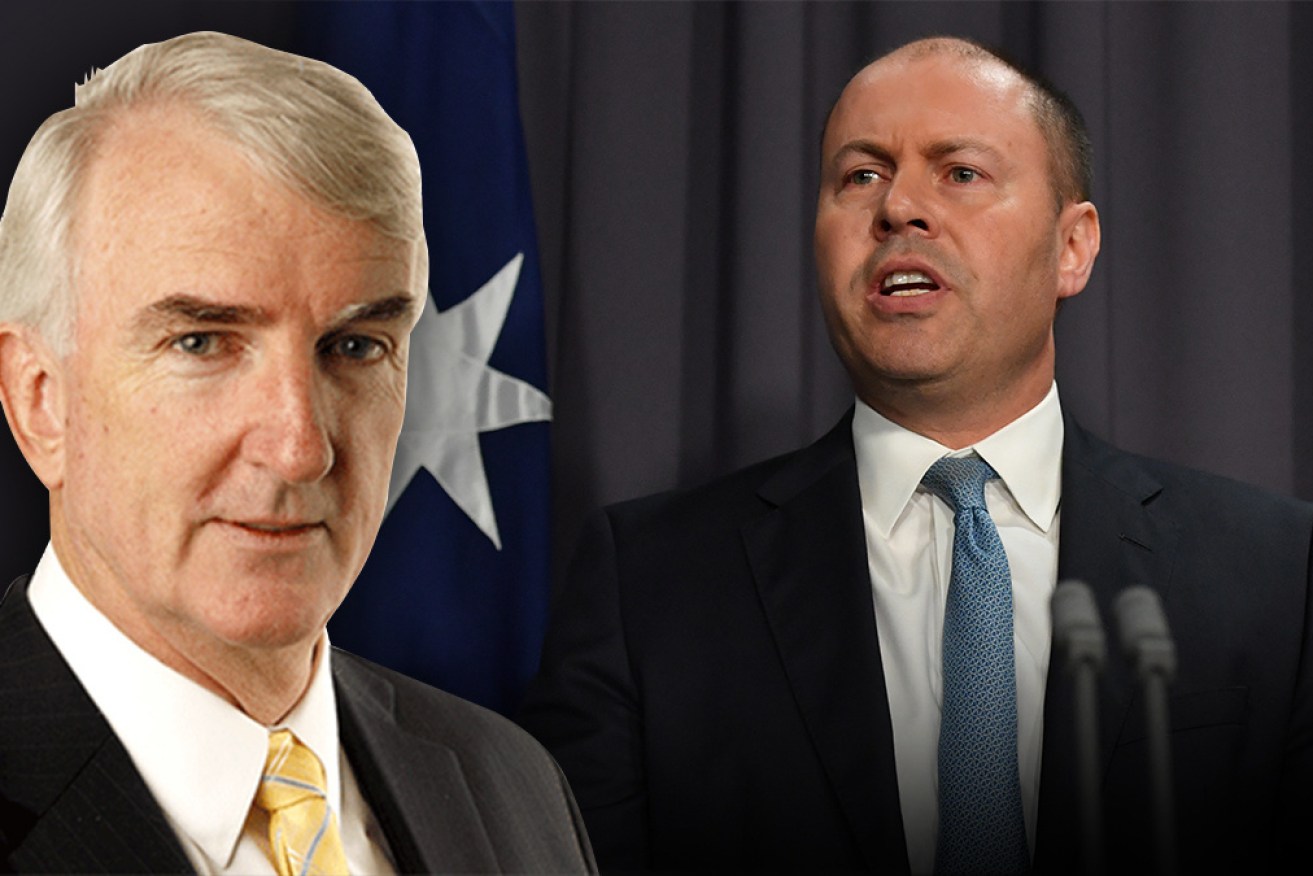Michael Pascoe: Why Australia’s next post-lockdown bounce back won’t score gold


Treasurer Josh Frydenberg will have to conjure magic to revive flagging confidence, Michael Pascoe says. Photo: AAP/TND
As the truth about our COVID future leaks out, the likelihood of another golden economic bounce back recedes.
The wave of optimism that swept up consumers after last year’s big lockdowns won’t be as strong.
Too many will realise it’s not over and won’t be over, that we won’t be going back to “normal”, that we’ll have to be prepared for more lockdowns. Those intelligent enough to want to avoid catching the virus will continue to live cautiously, live smaller.
On Friday Reserve Bank governor Philip Lowe warned the House of Representatives economics committee of two specific uncertainties that threaten our rebound.
“One source of uncertainty is the possibility of vaccine-resistant virus strains emerging over time,” Lowe said.
“Another is that it is still unclear what type of adjustments our society will have to make to live with COVID on an ongoing basis. Once vaccination rates are high enough, we will be living with a virus that is endemic rather than living through a pandemic,” he added.
“What this endemic phase looks like is still to be determined.”
The illusion politicians have tried to create about “freedom” being just around a vaccinated corner floundered on the details in the Doherty Institute modelling, as Alan Kohler explained on Thursday.
It confirmed what Dr Greg Kelly and others had warned – our “freedom” will be constrained by our ICU capacity.
While nearly all the vaccinated will avoid hospital and death from COVID, there will still be plenty of sickness and, among the unvaxed, serious and fatal infections.
We’ll still be watching case numbers as breakouts occur, still be counting the number in ICU – and the dead.
The “let it rip” brigade pointing to the UK’s alleged freedom might rejoice in the photographs of partying crowds there, but they ignore the stories of non-party-goers being made more cautious by those same photographs, of people remaining COVID careful in their behaviour and spending.
It is too early to have definitive figures on the UK experiment and such figures when they arrive will be complicated by the greater disaster that the pandemic has been in the UK.
Our own experiment in confidence recovery will play out soon enough, or so we hope.
One certainty is that uncertainty is the enemy of consumer confidence and it’s consumer confidence that the government is betting on to carry us to the federal election and through this financial year.
Haphazard political performances add to the uncertainty, flipflopping on containment measures, broken promises on vaccines, sniping and backbiting between states and the federal government.
For anyone following the politics, Niki Sava’s report of Mr Morrison’s men “briefing” against NSW Premier Berejiklian was both shocking and dispiriting. So much for Team Australia.
And yet again, the political integrity thing is a factor. The more politicians dissemble and mislead, the less faith the population can have in them, the less confidence there is in management.
For example, it might seem a long bow, but Scott Morrison refusing to be disclose his involvement in #carporkrorts feeds into people losing faith in the Prime Minister’s ability to be straight about COVID, diminishes confidence in whatever he is saying now about vaccines.
As the truth about our COVID future dribbles out, leadership failures undermining confidence worsen the impact of the Federal Government’s fiscal contraction.
Most of the big cash injections that fuelled the last rebound are either gone or already baked in.
The Great Superannuation Raid won’t be repeated. Our tourism deficit spending – $19 billion a year or so – is now part of the furniture and therefore doesn’t add to consumption. There’s not an extra $12 billion in JobKeeper being shovelled out to businesses that don’t need or deserve it.

Scott Morrison will be hoping consumer confidence returns. Photo: AAP
So don’t expect to see Treasurer Frydenberg beaming over especially high GDP figures for the December quarter after the September period’s dive. There will be a bounce, but a lesser one.
The RBA by nature has an optimistic bias. It’s the central bank’s job to try to talk things up in hard times and, overall, optimists win.
While cautioning the economic outlook is uncertain and depends on health and containment measures, Dr Lowe’s statement after Tuesday’s board meeting stuck with optimism for next year:
“The Bank’s central scenario is for the economy to grow by a little over 4 per cent over 2022 and by around 2½ per cent over 2023.
“This scenario is based on a significant share of the population being vaccinated by the end of this year and a gradual opening up of the international border from the middle of 2022.”
If the Doherty modelling is correct and the virus rolls through the unvaccinated population next year, 4 per cent growth could prove a big stretch.
And growth “around 2½ per cent” in 2023 is hardly robust.
No wonder the RBA can’t see interest rates rising at least until 2024.








